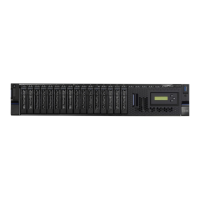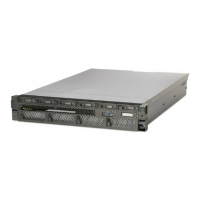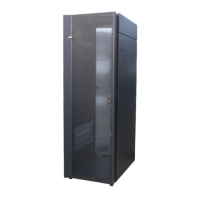Firmware slot capabilities
System PCIe slots are allocated direct memory access (DMA) space using the following algorithm:
• All slots are allocated a 2 GB default DMA window.
• All I/O adapter slots (except the embedded USB) are allocated Dynamic DMA Window (DDW) capability
based on installed platform memory. DDW capability is calculated assuming 4K I/O mappings:
– For systems with less than 64 GB of memory, slots are allocated 16 GB of DDW capability.
– For systems with at least 64 GB of memory, but less than 128 GB of memory, slots are allocated 32
GB of DDW capability.
– For systems with 128 GB or more of memory, slots are allocated 64 GB of DDW capability.
– Slots can be enabled with Huge Dynamic DMA Window capability (HDDW) using the I/O Adapter
Enlarged Capacity setting in ASMI.
– HDDW enabled slots are allocated enough DDW capability to map all of installed platform memory
using 64 K I/O mappings.
– Minimum DMA window size for HDDW enabled slots is 32 GB.
– Slots that are HDDW enabled are allocated the larger of the calculated DDW capability and HDDW
capability.
Adapter placement rules
Use this information while selecting slots for installing adapters in the 9040-MR9 system. Use Table 4 on
page 3 to identify adapter slot placement priorities and maximums for the system.
• P1-C9 and P1-C12 are general-purpose slots that are also designated as serial-attached SCSI (SAS)
controller slots for controlling the internal disk bays.
• All of the x16 PCIe slots are coherent accelerator processor interface (CAPI) enabled.
• Four of the x16 PCIe slots support NVlink or OpenCAPI 25 Gbs cable cards. The OpenCAPI cable cards
cannot be serviced with the system power turned on.
• P1-C1 is for the service processor card assembly. The P1-C1 slot cannot be serviced with the system
power turned on.
• P1-C6 is designated for the Base Ethernet card.
• The four x4 PCIe3 buses from the two PLX 24-port PCIe3 switches go to the four Non-volatile Memory
Express (NVMe) drives on the direct-access storage device (DASD) backplane at the front of the system.
Verify whether the adapter is supported for your system. The feature code (FC) column in the following
table lists all of the supported adapters for systems. You can select the FC for more details. To view
a list of adapters supported in the POWER9 processor-based systems and the EMX0 PCIe3 expansion
drawer, see Adapter information by feature code for the 9008-22L, 9009-22A, 9009-22G, 9009-41A,
9009-41G, 9009-42A, 9009-42G, 9040-MR9, 9080-M9S, 9223-22H, 9223-22S, 9223-42H, 9223-42S
system and EMX0 PCIe3 expansion drawers(http://www.ibm.com/support/knowledgecenter/POWER9/
p9hcd/p9hcd_pcibyfeature.htm).
The 9040-MR9 systems can have two, three, or four system processor modules.
Note: In the following table, the slot priority numbers 2 - 12 correspond to slot locations P1-C2 through
P1-C12.
Table 4. Adapter slot priorities and maximum adapters supported in the 9040-MR9
Feature code Description Slot priority Maximum number of
adapters supported
2 processors 3 processors 4 processors
5729 PCIe2 FH 4-port 8 Gb
Fibre Channel adapter
(FC 5729; CCIN 5729)
11, 8, 10, 7, 12, 9 11, 8, 5, 10, 7, 4, 12, 9 11, 8, 5, 3, 10, 7, 4, 2,
12, 9
6/8/10
Adapter placement for the 9040-MR93

